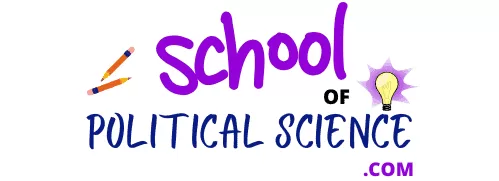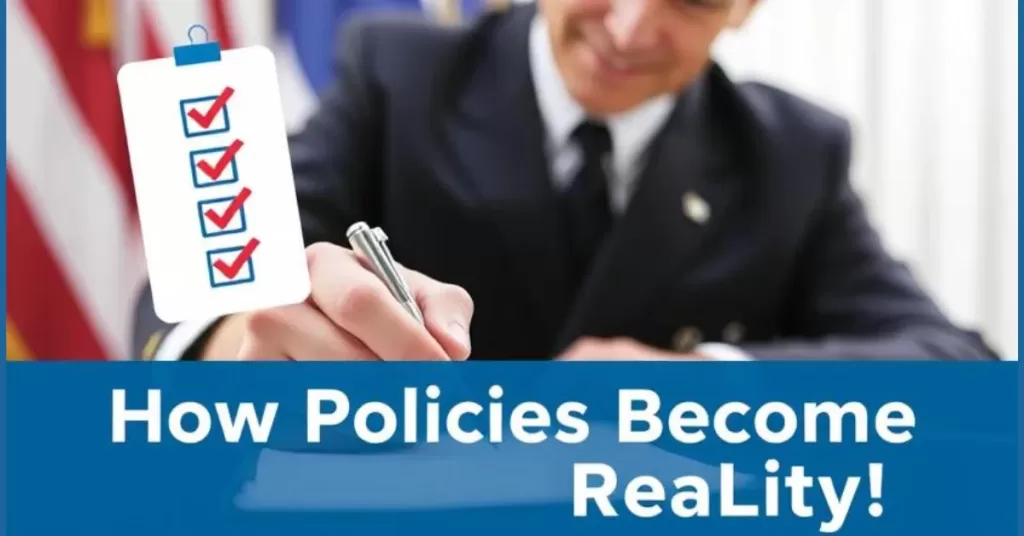Understanding Public Policy in Real Life
Think about the last time you experienced a change in your daily life due to government action. Maybe it was a new traffic rule, a tax rebate, or an education reform. Have you ever wondered how these policies transition from mere ideas into tangible actions that affect millions? That process is called public policy implementation—the stage where policies move from paper to practice.
Understanding public policy implementation is crucial, especially for students of political science and public administration. It determines whether policies succeed or fail in achieving their objectives. In this article, we will explore the meaning, process, challenges, and strategies involved in public policy implementation, making it easier for you to grasp this essential concept.
Must Read– Importance of Public Policy-10 Points Need to Know
What is Public Policy Implementation?
Public policy implementation is the process of executing and enforcing governmental policies after they have been formulated and approved. It involves various stakeholders, including government agencies, non-governmental organizations, private entities, and the public. This phase ensures that the intended goals of a policy are realized through concrete actions.
In simple terms, policy implementation is about answering this question: “How do we turn policy decisions into real-world outcomes?”
Must Read- The Crucial Link Between Public Policy and Administration
The Process of Public Policy Implementation
The implementation of public policies typically follows a structured process. Below are the key stages:
1. Policy Design and Planning
- Before execution, a clear blueprint must be created.
- Involves defining objectives, responsibilities, funding, and timelines.
- Requires collaboration among policy makers, bureaucrats, and stakeholders.
- A well-planned policy has a higher chance of successful implementation.
- Example: In education policy, proper planning includes teacher training, curriculum updates, and infrastructure development.
2. Resource Allocation
- Adequate funding and human resources must be allocated.
- Without proper resources, even the best policies can fail.
- Financial constraints can slow down or halt implementation entirely.
- Example: Healthcare policies require well-equipped hospitals, trained personnel, and medical supplies.
3. Execution by Government Agencies
- Government institutions and officials take charge of policy enforcement.
- Bureaucracy plays a critical role in translating policies into action.
- Public servants ensure that policies are implemented in alignment with government objectives.
- Example: The police force enforces new traffic laws, ensuring compliance and safety.
4. Monitoring and Evaluation
- Policies need regular monitoring to ensure they meet objectives.
- Feedback is collected, and necessary adjustments are made.
- Data-driven evaluation allows policymakers to understand the effectiveness of a policy.
- Example: An environmental policy to reduce pollution requires air quality monitoring systems.
Must Read– 12 Key Characteristics of Public Policy: Understanding Its Impact & Importance
Key Stakeholders in Policy Implementation
Successful policy implementation involves multiple stakeholders, each playing a unique role:
- Government Agencies: Responsible for enforcing policies.
- Legislative Bodies: Ensure laws and regulations align with policy goals.
- Judiciary: Acts as a watchdog to prevent policy violations.
- Non-Governmental Organizations (NGOs): Assist in policy outreach and execution.
- Media: Plays a role in transparency and public awareness.
- Citizens: The ultimate beneficiaries and participants in policy implementation.
- Private Sector: Businesses and industries also contribute by complying with and supporting policies.
- Academia and Research Institutions: Provide expert advice, data analysis, and policy evaluation reports.
Must Read– An In-Depth Look at Public Policy Issues and 5 Examples
Challenges in Public Policy Implementation
Despite well-designed policies, implementation can often fail due to various challenges:
1. Lack of Resources
- Insufficient funding and inadequate human resources hinder execution.
- Example: Healthcare policies failing due to a lack of medical infrastructure.
- Governments often struggle to balance budget allocations among different sectors.
2. Bureaucratic Delays
- Red tape and excessive regulations slow down implementation.
- Example: Infrastructure projects delayed due to lengthy approval processes.
- Bureaucracy, while necessary for governance, sometimes leads to inefficiencies.
3. Political Interference
- Politicians may manipulate policies for personal or party interests.
- Example: Policy shifts due to regime changes.
- Political instability often results in policy discontinuity, affecting long-term projects.
4. Corruption and Mismanagement
- Bribery, fraud, and misallocation of funds weaken policy execution.
- Example: Development funds diverted to personal accounts.
- Corruption increases distrust in government policies and reduces public cooperation.
5. Public Resistance and Lack of Awareness
- Policies can fail if citizens do not understand or accept them.
- Example: Resistance to vaccination policies due to misinformation.
- Public awareness campaigns play a crucial role in policy success.
Strategies for Effective Public Policy Implementation
1. Clear Communication and Awareness Campaigns
- Educating citizens about new policies increases acceptance.
- Media, social platforms, and public consultations play a key role.
- Example: Governments using TV ads and social media for public health awareness.
2. Efficient Resource Management
- Governments must allocate funds wisely and eliminate waste.
- Use of technology can enhance efficiency.
- Example: Implementing e-governance to reduce paperwork and improve service delivery.
3. Reducing Bureaucratic Hurdles
- Simplifying approval processes speeds up implementation.
- Example: Digital platforms for faster policy execution.
- Streamlining processes reduces the time taken to implement reforms.
4. Strong Monitoring and Accountability Systems
- Independent audits and public oversight ensure transparency.
- Example: Real-time tracking of government projects.
- Performance reviews help policymakers identify areas that need improvement.
5. Encouraging Stakeholder Participation
- Engaging NGOs, businesses, and local communities boosts efficiency.
- Example: Public-private partnerships in infrastructure development.
- Collaboration enhances innovation and ensures better outcomes.
Case Studies of Public Policy Implementation
1. Success Story: The Green Revolution in India
- Objective: Improve agricultural production. (StudyIQ)
- Implementation: Introduction of high-yield seeds, fertilizers, and irrigation projects.
- Outcome: Increased food security and economic growth.
- Lessons Learned: Proper resource allocation and stakeholder participation are key to success.
2. Failure: The Demonetization Policy in India (2016)
- Objective: Curb black money and corruption. (AEA)
- Implementation: Sudden withdrawal of high-value currency notes.
- Outcome: Severe cash shortages, economic slowdown, and mixed results.
- Lessons Learned: Policies need better planning and impact assessment before implementation.
Frequently Asked Questions (FAQs)
1. Why is public policy implementation important?
Public policy implementation is crucial because it ensures that government policies are executed effectively, leading to real-world benefits for society.
2. What are the key factors for successful policy implementation?
Key factors include clear policy design, adequate funding, effective communication, strong leadership, and stakeholder participation.
3. What are common reasons for policy failure?
Policy failure often results from poor planning, lack of resources, bureaucratic inefficiencies, corruption, and public resistance.
4. How can governments improve policy implementation?
Governments can enhance implementation by streamlining bureaucracy, ensuring transparency, involving stakeholders, and using technology for efficient governance.
5. What role does the public play in policy implementation?
The public plays a crucial role by providing feedback, participating in policy discussions, complying with regulations, and holding the government accountable.
Conclusion: The Road Ahead for Policy Implementation
Public policy implementation is a complex yet essential process in governance. Without effective implementation, even the best policies remain mere intentions. Governments must focus on transparency, efficiency, and public engagement to ensure policies lead to real change.
As students of political science and public administration, you must analyze policies critically and understand their impact on society. Keep questioning, keep learning, and remember: policy success is not just about formulation but about execution.
What are some policies that have directly affected your life? Share your thoughts in the comments below!

